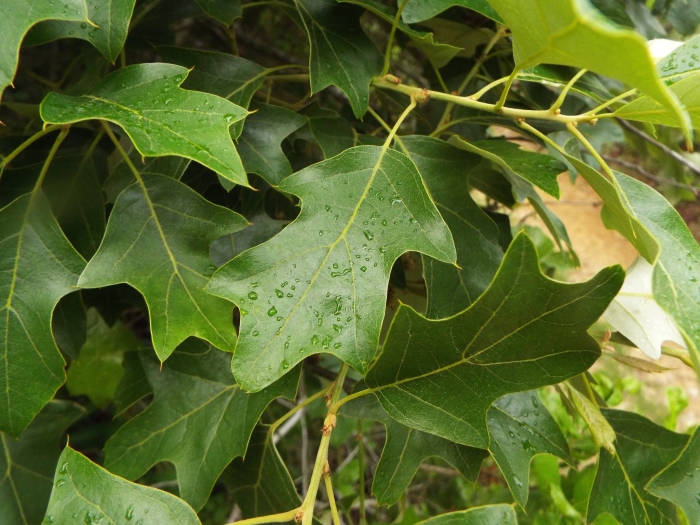Bear Oak
(Quercus ilicifolia)
Bear Oak (Quercus ilicifolia)
/
/

Jonathan Layman
CC BY 4.0
Image By:
Jonathan Layman
Recorded By:
Copyright:
CC BY 4.0
Copyright Notice:
Photo by: Jonathan Layman | License Type: CC BY 4.0 | License URL: http://creativecommons.org/licenses/by/4.0/ | Rights Holder: Jonathan Layman | Publisher: iNaturalist | Date Created: 2019-06-16T18:52-07:00 |
























Estimated Native Range
Summary
Quercus ilicifolia, commonly known as Bear Oak or Scrub Oak, is a deciduous shrub or small tree native to dry, sandy soils of oak-pine barrens, ridgetops, and outcrops in the Eastern United States and southeastern Canada. It is a slow-growing plant that typically reaches up to 20 feet in height but is often found much shorter, around 6-10 feet, with a similar spread. Bear Oak has a rugged appearance with a twisted trunk and branches, and its leaves are smaller and more variable in shape than those of larger oaks. The foliage turns a modest yellow-brown in the fall. In spring, it produces inconspicuous yellow-green flowers, followed by small acorns that are a valuable food source for wildlife.
Bear Oak is valued for its ability to thrive in poor, dry soils and its use in restoration and conservation projects, particularly in areas prone to fire, as it is adapted to regenerate after burning. It is also used for wildlife gardens and naturalized areas. In cultivation, it requires well-drained soils, tolerates drought, and prefers full sun to part shade. While not commonly found in nurseries, it can be a unique addition to a native plant garden. It has no major disease problems, but its growth can be stunted in overly fertile or moist soils.CC BY-SA 4.0
Bear Oak is valued for its ability to thrive in poor, dry soils and its use in restoration and conservation projects, particularly in areas prone to fire, as it is adapted to regenerate after burning. It is also used for wildlife gardens and naturalized areas. In cultivation, it requires well-drained soils, tolerates drought, and prefers full sun to part shade. While not commonly found in nurseries, it can be a unique addition to a native plant garden. It has no major disease problems, but its growth can be stunted in overly fertile or moist soils.CC BY-SA 4.0
Plant Description
- Plant Type: Shrub, Tree
- Height: 9.75-20 feet
- Width: 9.75-15 feet
- Growth Rate: Slow, Moderate
- Flower Color: N/A
- Flowering Season: Spring, Summer
- Leaf Retention: Deciduous
Growth Requirements
- Sun: Full Sun
- Water: Medium
- Drainage: Medium
Common Uses
Deer Resistant, Drought Tolerant, Erosion Control, Low Maintenance, Rock Garden
Natural Habitat
Dry, sandy soils of oak-pine barrens, ridgetops, and outcrops
Other Names
Common Names: Dwarf Chestnut Oak, Scrub Oak
Scientific Names: , Quercus ilicifolia, Quercus banisteri, Quercus discolor var. banisteri, Quercus ilicifolia var. georgiana, Quercus nana, Quercus nigra var. ilicifolia, Quercus nigra var. pumila, Quercus pumila, Quercus rubra var. nana,
GBIF Accepted Name: